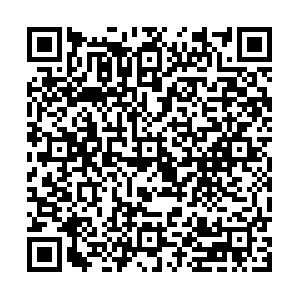Clinical features of drug-induced liver injury and related risk factors
-
摘要:
目的探讨药物性肝损伤(DILI)的临床特点及危险因素。方法回顾性分析2013年1月-2017年11月在西南医科大学附属医院诊断为DILI的208例患者的药物种类、临床资料和实验室检查,分析DILI的临床特点。其中使用抗结核药、肿瘤药、免疫制剂致DILI的患者80例作为观察组,另选取同期在该院使用该3种药物但未发生DILI的患者80例作为对照组,进行危险因素分析。正态分布的计量资料多组间比较采用方差分析;非正态分布计量资料多组间比较采用Kruskal-Wallis H检验。计数资料的无序变量组间比较采用χ2检验;等级变量采用Mann-Whitney U检验,logistic回归分析危险因素。结果以中药引起DILI的患者所占比例最大(30.8%);不同类型DILI之间性别、ALT、AST、TBil、GGT、总胆汁酸(TBA)差异均有统计学意义(χ2=6.081,H值分别为54.349、45.993、78.902、49.940、21.934,P值均<0.05),而AST、TBil、GGT、TBA在不同预后患者中差异均有统计学意义(H值分别为1.728、6.322、6.440、2.353...
Abstract:Objective To investigate the clinical features of drug-induced liver injury (DILI) and related risk factors. Methods A retrospective analysis was performed for the clinical data of 208 patients who were diagnosed with DILI in The Affiliated Hospital of Southwest Medical University from January 2013 to November 2017, including the type of drugs, clinical data, and laboratory examination results, and among these patients, 80 with DILI caused by antitubercular agents, antitumor drugs, and immune agents were enrolled as observation group. A total of 80 patients who used these three types of drugs and did not develop DILI were enrolled as control group. Related risk factors were analyzed. An analysis of variance was used for comparison of normally distributed continuous data between multiple groups, and the Kruskal-Wallis H test was used for comparison of non-normally distributed continuous data between multiple groups. The chi-square test was used for unordered variables of categorical data, the Mann-Whitney U test was used for ranked data, and a logistic regression analysis was used to identify risk factors. Results Of all patients with DILI, 30. 8% had DILI caused by traditional Chinese medicine. There were significant differences in sex, alanine aminotransferase, aspartate aminotransferase (AST) , total bilirubin (TBil) , gamma-glutamyl transpeptidase (GGT) , and total bile acid (TBA) between patients with different types of DILI (χ2= 6. 081, H = 54. 349, 45. 993, 78. 902, 49. 940, and 21. 934, all P < 0. 05) . There were significant differences in AST, TBil, GGT, and TBA between the patients with different prognoses (H = 1. 728, 6. 322, 6. 440, and 2. 353, all P < 0. 05) . Smoking (odds ratio [OR]= 2. 856, P = 0. 026) , diabetes (OR = 2. 726, P = 0. 042) , hyperlipidemia (OR = 3. 390, P = 0. 003) , and body mass index (BMI) ≥28 kg/m2 (OR = 3. 142, P =0. 009) were risk factors for DILI. Conclusion Most DILI cases are caused by traditional Chinese medicine, and hepatocellular type is the most common type of liver injury. Smoking, diabetes, hyperlipidemia, and BMI ≥28 kg/m2 are risk factors for DILI.
-
Key words:
- drug-induced liver injury /
- clinical features /
- risk factors
-
[1]WANG G, LIN Y, HOU XF, et al.Discussion on influence factors, mechanism and traditional Chinese medicine pathogenesis of idiosyncratic drug-induced liver injury[J].China J Chin Mater Med, 2017, 42 (16) :3036-3043. [2]DALAL K, HOLDBROOK T, PEIKI S.Ayurvedic drug induced liver injury[J].World J Hepatol, 2017, 9 (31) :1205-1209. [3]HU Q, LIU W, SHAO H.Research progress of pharmacotherapy drug-induced liver injury[J].Chin J Clin Pharmacol Ther, 2016, 21 (2) :231-236. (in Chinese) 胡琴, 刘维, 邵宏.药物性肝损伤的药物治疗研究进展[J].中国临床药理学与治疗学, 2016, 21 (2) :231-236. [4]REGEV A.How to avoid being surprised by hepatotoxicity at the final stages of drug develo-pment and approval[J].Clin Liver Dis, 2013, 17 (4) :749-767. [5]Drug-induced Liver Disease Study Group, Chinese Society of Hepatology, Chinese Medical Association.Guidelines for the management of drug-induced liver injury[J].J Clin Hepatol, 2015, 31 (11) :1752-1769. (in Chinese) 中华医学会肝病学分会药物性肝病学组.药物性肝损伤诊治指南[J].临床肝胆病杂志, 2015, 31 (11) :1752-1769. [6]CHALASANI P, HAYASH H, BONKOVSKY L, et al.ACG Clinical Guideline:the diagnosis and management of idiosyncratic drug-induced liver injury[J].Am J Gastroenterol, 2014, 109 (7) :950-966. [7]GIORDANO C, RIVAS J, ZERVOS X.An update on treatment of drug-induced liver injury[J].Clin Transl Hepatol, 2014, 2 (2) :74-79. [8]LI L, JIANG W.Clinical analysis of 275 cases of acute drug-induced liver disease[J].Front Med China, 2007, 1 (1) :58-61. [9]HALLER C, DYER J, KO R, et al.Making a diagnosis of herbal-related toxic hepatitis[J].West J Med, 2002, 176 (1) :39-44. [10]GOODMAN Z.Phenotypes and pathology of drug-induced liver disease[J].Clin Liver Dis, 2017, 21 (1) :89-101. [11]SHAO C, WU C, LI J, et al.Clinical characteristics analysis of122 patients with drug induced liver injury[J].Chin Hepatol, 2012, 17 (9) :451-453. [12]JI CH, ZHANG ZQ, WANG XY, et al.Clinical features of elderly patients with drug-induced liver injury[J].J Clin Hepatol, 2017, 33 (3) :502-506. (in Chinese) 姬琛华, 张竹青, 王晓媛, 等.老年药物性肝损伤患者临床特征分析[J].临床肝胆病杂志, 2017, 33 (3) :502-506. [13]CHALASANI N, BONKOVSKY H, FONTANA R, et al.Features and outcomes of 899 pat-ients with drug-induced liver injury:the DILIN prospective study[J].Gastroenterology, 2015, 148 (7) :1340-1352. [14]LEE W.Drug-induced hepatotoxicity[J].N Engl J Med, 1995, 333 (17) :1118-1127. [15]LIU LN, ZHAO JX, CHEN WT.et al.Prognostic factors in 138patients with drug-induced liver injury[J].J Pract Hepatol, 2015, 18 (2) :160-163. (in Chinese) 刘丽娜, 赵建学, 陆玮婷, 等.138例药物性肝损伤患者影响预后的因素分析[J].实用肝脏病杂志, 2015, 18 (2) :160-163. [16]SCHROEDER MJ, HOFFMAN AC.Electronic cigarettes and nicotine clinical pharmacology[J].Tobacco Control, 2014, 23 (Suppl2) :ii30-ii35. [17]XU LH, ZHANG L, CHEN W, et al.Clinical features and the prognosis of acute drug-induced liver injury[J].J Pract Med, 2013, 29 (3) :3668-3671. (in Chinese) 徐丽红, 张蕾, 陈卫刚, 等.急性药物性肝损伤临床特点及预后分析[J].实用医学杂志, 2013, 29 (3) :3668-3671. [18]LATIEF M, DAR W, SOFI N, et al.Novel risk factors and early detection of anti tubercular treatment induced liver injury-looking beyond American Thoracic Society Guidelines[J].Indian J Tuberc, 2017, 64 (1) :26-32. 期刊类型引用(12)
1. 郭龙鑫,高云娟,吴承钊,龙敏娟,祝胜凯,宋海波,赵旭,肖小河. 基于不良反应监测大数据的中药药源性肝损伤风险信号新发现及易感因素初探. 中国药物警戒. 2024(01): 15-19 .  百度学术
百度学术2. 李勇,张蕾,吴幸福. 老年药物性肝损伤患者临床特征分析. 实用肝脏病杂志. 2024(04): 547-550 .  百度学术
百度学术3. 徐媛,方忠宏,冉姗. 1例多因素所致药物性肝损伤病例的病因论证与药学监护. 药物流行病学杂志. 2023(03): 350-355 .  百度学术
百度学术4. 郭冬伟. 生物技术药物的免疫毒性和免疫原性的分析及探讨. 当代化工研究. 2021(03): 161-162 .  百度学术
百度学术5. 李任,苏庆全,黎运. 62例肺结核患者抗结核药物治疗致药物性肝损伤的危险因素分析及其防治对策. 抗感染药学. 2021(05): 724-726 .  百度学术
百度学术6. 杨焕芝,李兴德,陈学平,张仲安,钱彦华,蒋潇,徐艳琼,宋沧桑. 93例药物性肝损伤患者临床特征分析. 中国药业. 2021(15): 122-125 .  百度学术
百度学术7. 王巧玲,邹正升. 细胞色素P450基因多态性与药物性肝损伤的关系. 临床肝胆病杂志. 2020(05): 1150-1153 .  本站查看
本站查看8. 许维国. 中草药导致药物性肝损伤的现状及研究进展. 中国处方药. 2020(06): 14-16 .  百度学术
百度学术9. 刘毅,周淑娴,陈念辉. 1例药源性肝损伤合并2型糖尿病患者的病例分析. 中国药师. 2020(10): 1986-1989 .  百度学术
百度学术10. 陈龙,李钺. 肝切除术后并发症的危险因素及预测评分系统. 临床肝胆病杂志. 2019(01): 217-221 .  本站查看
本站查看11. 郭永涛. 抗肺结核药物所致肝损伤患者临床症状分布及危险因素分析. 山西医药杂志. 2019(05): 564-566 .  百度学术
百度学术12. 刘丽艳,唐晓雯,董春玲,陶茹,刘成海,张雅丽. 药物性肝损伤患者的护理研究进展. 护士进修杂志. 2019(24): 2253-2256 .  百度学术
百度学术其他类型引用(8)
-




 PDF下载 ( 1551 KB)
PDF下载 ( 1551 KB)

 百度学术
百度学术
 下载:
下载:

